- Top Employee Onboarding Software
- Why Use Employee Onboarding Software?
- Key Features of Effective Onboarding Software
- How To Choose The Right Onboarding Software?
- Which is the Best Onboarding Software?
- Frequently Asked Questions (FAQs)
- What Is Upskill And Reskill?
- Difference Between Reskilling And Upskilling
- Upskilling for Workplace Advancement
- Reskilling for Career Transformation
- Crafting Successful Upskill and Reskill Strategies
- Upskill And Reskill Strategizing: Things to Keep in Mind
- Measuring the Impact of Skill Development Initiatives
- Frequently Asked Questions
- What’s a Skill Gap?
- Employee Skill Gap Analysis: Why Do We Need It?
- How To Conduct Employee Skill Gap Analysis?
- Addressing Skill Gaps Through Training and Hiring
- Utilizing Skills Gap Analysis for Strategic Planning
- Leveraging Employee Skill Gap Analysis: Things To Keep In Mind
- Frequently Asked Questions
- Transformative Role of AI in Talent Acquisition
- Impact of AI on Business Recruiting
- Overcoming Challenges in AI-Driven Talent Acquisition
- Starting with AI in Talent Acquisition
- Future Landscape of AI in Talent Acquisition
- Frequently Asked Questions
- HR In The Hot Seat - Challenges With Evolving Workforce
- Mastering Effective HR Management: Tips For Overcoming Challenges
- Summing Up
- The Future of HR: Key Trends for 2024
- Skill-Based Hiring
- Prioritizing Employee Experience, Engagement & Well-being
- AI-Empowered Workforce Evolution and Its Impact
- Taking Diversity, Equity, and Inclusion Beyond Mandates
- Hybrid and Remote Work
- Embracing the Gig Economy and Blended Workforce
- Transparent HR Practices
- Climate Change Adaptation in HR Practices
- Leveraging HR Analytics for Data-Driven Decisions
- Continuous Learning & Development to Improve Productivity
- The Office Buzz in 2024
- Bottom Line - HR Operating Model Needs A Shift
- Importance and Impact of Recognizing Employee Birthdays
- Professional Birthday Wishes for Employees (All Experience Levels)
- Personalized Birthday Wishes for Employees in Different Roles
- Fun Birthday Wishes for Employees (with Templates)
- Birthday Wishes for Remote Employees
- Heartfelt Birthday Wishes for Employees
- Belated Birthday Wishes for Employees
- Simple & Sweet Birthday Wishes for Employees
- Celebrating Employee Birthdays: Ideas and Traditions
- Tips and Ideas for Sending Birthday Wishes to Employees
- Closing Thoughts
- Frequently Asked Questions
- What Is An Employee Referral?
- Benefits of Implementing Employee Referral Programs
- Setting Up an Effective Employee Referral Program
- Employee Referral Email
- Employee Referral Scheme
- Overcoming Challenges of Employee Referrals
- Companies with Best Employee Referral Programs
- Employee Referral Programs: Best Practices
- Closing Thoughts
- Frequently Asked Questions (FAQs)
- Importance of Team Building Activities
- Types of Team Building Activities
- Outdoor Team Building Activities for Employees
- Indoor Team Building Activities for Employees
- Easy Team Building Activities for Remote Employees
- Team Building Activities For New Employees (Icebreakers)
- Fun Team Building Activities for Different Goals
- To Boost Communication and Collaboration
- To Reduce Stress Levels and Promote Well-being
- Aligning Team Purpose and Values with Strategic Activities
- Final Remarks
- Frequently Asked Questions
- Importance of Employee Appreciation Quotes
- Work Appreciation Quotes for Employees
- Employee Appreciation Quotes for Hard Work Recognition
- Employee Appreciation Quotes for Teamwork and Collaboration
- Appreciation Quotes for Celebrating Employee Anniversaries and Milestones
- Employee Appreciation Quotes for Strong Work Ethics
- Employee Appreciation Quotes for Project & Goal Completion
- Employee Appreciation Quotes for Quality of Work
- Employee Appreciation Quotes for Creativity and Innovation
- Appreciation Quotes for Managers
- Peer-to-Peer Employee Appreciation Quotes
- Appreciation Quotes for Employees Leaving the Company
- Employee Appreciation Quotes for Thoughtful Gestures
- Funny Employee Appreciation Quotes
- Short Employee Appreciation Quotes
- Employee Appreciation Quotes for Different Roles
- Employee Appreciation Quotes for Senior Leadership
- Creative Ways to Use Employee Appreciation Quotes
- Summary
- Frequently Asked Questions (FAQs)
- What is Employee Satisfaction?
- Importance of Employee Satisfaction
- Objectives of Employee Satisfaction
- Employee Satisfaction vs. Employee Engagement
- Key Reasons for Employee Dissatisfaction
- Strategies for Improving Employee Satisfaction
- Ways to Measure Employee Satisfaction
- Best Practices for High Employee Satisfaction
- Final Remarks
- Frequently Asked Questions (FAQs)
- How to Craft Effective Employee Appraisal Comments
- Key Areas to Focus in Performance Review
- Comments On Hard Work & Dedication
- Assessing Interpersonal Skills
- Evaluating the Ability to Collaborate & Work in Teams
- Gauging Punctuality
- Commenting on Communication Style
- Reviewing Time Management and Productivity
- Leadership in Performance Appraisals
- Assessing Creativity & Innovation
- Evaluating Problem-Solving Abilities
- Recognizing Flexibility and Dependability in Reviews
- Employee Appraisal Comments for Different Roles
- Summary
- Frequently Asked Questions (FAQs)
- Employee Grievance Meaning
- Importance of Employee Grievance Process
- Types of Workplace Grievances
- Reasons for Employee Grievances
- Employee Grievance Procedure
- Steps in the Employee Grievance Handling Process
- Employee Grievance Form Example
- Final Remarks
- Frequently Asked Questions (FAQs)
- What is Company Culture?
- Importance of Company Culture
- Types of Company Culture
- Factors Contributing to Organizational Culture
- Assessing & Developing Corporate Culture
- Company Culture - It’s not just Perks or Feels
- Good Company Culture Examples
- Developing Company Culture: Best Practices
- Closing Thoughts
- Frequently Asked Questions (FAQs)
- What is Employee Empowerment?
- Benefits of Empowering Employees
- Employee Empowerment vs. Micromanagement
- Strategies for Effective Employee Empowerment
- Role of Managers in Fostering Empowerment
- Organizational Structure Supporting Empowerment
- Overcoming Barriers to Employee Empowerment
- Frequently Asked Questions (FAQs)
- What is Employer Branding?
- Importance of Employer Branding Strategy
- How to Build an Employer Branding Strategy?
- Strategies for Building a Strong Employer Brand
- How to Measure and Boost Your Employer Branding Success?
- Examples of Strong Employer Brand Strategy
- Best Practices for an Effective Employer Branding Strategy
- Closing Thoughts
- Frequently Asked Questions (FAQs)
- What are Employee Wellness Programs?
- Importance of Employee Wellness Programs
- Examples of Employee Wellness Programs
- Real-Life Examples of Corporate Wellness Programs
- Strategies for Encouraging Participation
- Supporting Diverse Employee Needs
- Creating Comprehensive Wellness Programs
- Measuring the Impact on Business and Employees
- Closing Thoughts
- Frequently Asked Questions (FAQs)
- What is Talent Management?
- Developing a Winning Talent Management Strategy
- Models and Frameworks
- Tips for Framing Effective Talent Management Strategy
- Looking Ahead: Recent Trends in Talent Management
- Frequently Asked Questions
- Role of AI in HR: Addressing Common Challenges
- Artificial Intelligence in HR Processes
- AI Tools for HR Functions
- How to Adopt AI in HR?
- Addressing Challenges of AI in HR
- Ethical and Responsible AI Use
- The Future of AI in HR
- Closing Thoughts
- Frequently Asked Questions
- What is Performance Management?
- Elements of Effective Performance Management
- Performance Management Cycle
- Differentiating Performance Management
- Benefits of Performance Management With Examples
- Challenges faced in Performance Management and their Solutions
- Future Trends in Performance Management
- Frequently Asked Questions
- Changing Role of HRM
- Changing Role Of HR Manager
- Technology and the Changing Role of HRM
- The Rise of AI and Machine Learning in HR
- Mobile Technology's Impact on HR Practices
- The Significance of People Analytics in HR
- Navigating the Future of HR Technology
- Final Remarks
- Frequently Asked Questions
- Compensation Management Meaning
- Compensation Types
- Breaking Down The Compensation Management Process
- HR Software for Compensation Management
- Current Trends in Compensation Management
- Frequently Asked Questions
- Defining Flexible Work Arrangements
- Flexible Working: Advantages for Businesses
- Challenges of Flexible Work Arrangements
- Crafting Flexible Working Practices
- Types Of Flexible Work Arrangements
- Comparing Flexible Work Arrangements
- Real-Life Examples of Flexible Work Arrangements
- Final Remarks
- Frequently Asked Questions
- Conflict Resolution Meaning
- Conflict Origins
- Tried & Tested Conflict Resolution Strategies
- Methods of Conflict Management at Workplaces
- Conflict Resolution Strategies: Top Management Tips
- Summary
- Frequently Asked Questions
- Career Development Meaning
- Career Development Plan for Employees
- Career Development in HRM: Growth Ideas For Employees
- Issues in Career Development and Their Solutions
- Closing Thoughts
- Frequently Asked Questions
- Understanding Compensation
- Exploring Benefits
- Difference between Compensation and Benefits
- Compensation & Benefits Structure
- Final Remarks
- Frequently Asked Questions
- Defining Recruitment in HR Practices
- Exploring Talent Acquisition in HR
- Understanding Talent Acquisition vs Recruitment
- When to Recruit or Acquire Talent
- Talent Acquisition vs Recruitment: Responsibilities
- From Recruitment To Talent Acquisition
- Closing Thoughts
- Frequently Asked Questions
- Work Culture Meaning
- Types of Work Cultures
- Components of Culture
- Best Work Culture Examples Set By Top Companies
- Creating a Positive Work Culture
- Closing Thoughts
- Frequently Asked Questions
- Defining Learning vs Development
- Importance of Learning and Development
- L&D Activities for Employees
- Choosing the Right L&D Activities
- Crafting an Effective L&D Strategies
- Aligning L&D Strategy with Business Goals
- Designing Engaging Learning Journeys
- Learning and Development Process: KPIs
- ROI in Learning and Development
- Emerging Trends in L&D
- Closing Thoughts
- Frequently Asked Questions
- What Is Leadership Development?
- Key Skills for Leaders
- How To Develop Leadership Skills in Organizations?
- What Is A Leadership Development Program?
- How To Develop A Leadership Development Program?
- Example of A Leadership Development Plan
- Benefits of Leadership Development Training
- Frequently Asked Questions
- Defining Diversity Training
- Importance of Diversity Training
- What are the Types of Diversity?
- Types of Diversity Training Methods
- Diversity Training Activities
- Choosing A Diversity Training Program
- How to Implement Diversity Initiatives
- Best Diversity Training Programs (Real-Life Examples)
- Improving the Effectiveness of Diversity Training
- Tracking and Evaluating the Results of DE&I Training Efforts
- Essential Elements for Successful Diversity Training
- Closing Thoughts
- Frequently Asked Questions
- Defining Occupational Health & Safety
- Evolution of Workplace Health and Safety
- Identifying Common Workplace Hazards
- Global Impact on Occupational Health & Safety
- Managing Employee Health and Safety Risks
- Occupational Health and Safety Problems
- Future of Occupational Health and Safety
- Frequently Asked Questions
- Employee Orientation Defined
- Employee Onboarding Explained
- Orientation and Onboarding: Understanding the Difference
- Importance of Orientation and Onboarding
- Crafting Comprehensive Integration Strategies
- Quick Tips for Orientation and Onboarding
- Frequently Asked Questions
- What is HR Metrics?
- Importance of HR Metrics
- HR Metrics Examples in Recruitment
- HR Metrics Examples in Employee Retention
- HR Metrics Examples in Revenue
- Other Common HR Metrics
- Soft HR Metrics Example
- HR Metrics Formula
- Utilizing HR Metrics Effectively
- Future of HR Metrics
- Summary
- Frequently Asked Questions
- Defining Decision Making Process
- Key Concepts In Decision Making
- Decision Making & Problem Solving
- Tips For Improving Decision Making Skills
- Selected Practice Questions & Answers
- Conclusion
- Frequently Asked Questions (FAQs)
- A case(s) of miscommunication
- The devil is in the (resume) details
- One for the complaints!
- What is an Exit Interview?
- Benefits of Exit Interviews to an Organization
- How to Conduct Exit Interviews?
- Exit Interview: Sample Questions to Ask
- Overcoming Challenges of Exit Interviews
- Exit Interviews: Best Practices
- Closing Thoughts
- Frequently Asked Questions
- Technology in the Workplace
- Benefits of Tech Integration
- Technology in the Workplace: Key Functions
- How Technology Normalized Remote Work
- Workplace Technology: Top Tools and Software
- Steps for Effective Technology Implementation
- Overcoming Tech Implementation Challenges
- Ethical Considerations in Tech Use
- Keeping Pace with Tech Trends
- Closing Thoughts
- Frequently Asked Questions
- What is Ethical Leadership?
- Principles of Ethical Leadership
- Difference between Ethics and Integrity
- Importance of Ethical Leadership
- Ethical Leadership in Practice
- Overcoming Challenges
- Frequently Asked Questions
- Embracing Change Management
- Mastering People Analytics
- Enhancing Stakeholder Relationships
- Navigating Diversity, Equity & Inclusion
- Upholding Ethics and Data Privacy
- Developing Critical Thinking
- Advancing Negotiation Techniques
- Fostering Inter-departmental Collaboration
- Building Resilience in HR
- Frequently Asked Questions
- What is Mental Health?
- Benefits of a Mentally Healthy Workforce
- Prioritising Mental Health: Creating a Culture of Support
- Final Remarks
- Frequently Asked Questions
- Gen Z vs Millennials - What is the difference?
- Retain and Engage Gen Z Employees: Need and Strategies
- Strategies to Retain and Engage Gen Z Employees
- Rethinking Requirements
- Final Remarks
- Frequently Asked Questions
- Understanding Millennial Leadership Needs
- Key Leadership Skills for Millennials
- How To Develop Millennial Into Leaders
- Additional Strategies to Develop Leaders
- Learning Preferences of Millennials
- Benefits of Investing in Millennial Leaders
- Closing Thoughts
- Frequently Asked Questions
- Understanding Fluff
- Examples of Interview Fluff
- Identifying Interview Fluff
- Addressing Interview Fluff
- Seeing Through the Fluff
- Frequently Asked Questions
- What is the Gender Pay Gap?
- Is the Gender Pay Gap Real?
- Factors Affecting the Gender Pay Gap
- How Age Impacts Women’s Earnings
- The ‘Motherhood Penalty’
- Education's Role in Wage Differences
- Racial and Ethnic Disparities in Pay
- Closing the Gender Gap
- Frequently Asked Questions
- Top Weirdest Late-To-The-Office Excuses
- The Fine Art of Balancing Wit and Wisdom in HR
- Understanding Social Media Recruiting
- Crafting Your Social Media Recruitment Strategy
- Implementing Your Strategy Effectively
- Popular Platforms for Recruitment
- Navigating the Downsides of Social Media Recruiting
- Measuring Success and Adjusting Strategy
- Summary
- Frequently Asked Questions
- Who Is A High Potential (HIPO) Employee?
- Characteristics of A High Potential (HIPO) Employee
- High Potential Employee Identification
- Grooming High Potential Employees
- Why High Potential Employees Leave
- How Do You Retain High Potential Employees?
- High Potential Employee Development: Best Practices
- Closing Thoughts
- Frequently Asked Questions
- What is Digital Fluency?
- Why Digital Fluency Matters?
- Difference between Digital Literacy and Digital Fluency
- Key Components of Digital Fluency
- Achieving Digital Fluency
- Overcoming Challenges
- Future of Workforce Digital Fluency
- Frequently Asked Questions
- What is Loud Quitting?
- Pros and Cons of Loud Quitting
- Reasons Behind the Trend
- Analyzing the Impact
- How HR Can Navigate the Loud Quitting Uproar
- Preventive Strategies
- Closing Thoughts
- Frequently Asked Questions
- Defining Emotional Intelligence in HR
- Why Emotional Intelligence Matters for HR Leaders
- How To Build Emotional Intelligence in HR
- Integrating EQ into HR Practices
- Impact of EQ on Company Culture
- Emotional Intelligence in HR: Major Challenges
- Final Remarks
- Frequently Asked Questions
- Understanding Internal Job Posting
- Internal Job Posting: Pros and Cons
- The Internal Job Posting Process
- Writing Effective Ads for Internal Job Posting
- Strategies for Success of Internal Job Posting
- Summary
- Frequently Asked Questions
- Understanding Workplace Bias
- Common Types of Bias in HR
- Closing Thoughts
- Frequently Asked Questions
- What is a Dry Promotion?
- Dry Promotion: Pros and Cons for Companies
- Impact of Dry Promotion on Employee Retention
- Preventing Talent Loss After Dry Promotions
- Closing Thoughts
- Frequently Asked Questions
- What Is A Stay Interview?
- Importance Of Stay Interviews
- Benefits And Challenges Of Stay Interviews
- Planning And Conducting Stay Interviews
- Stay Interviews: 20 Sample Questions To Ask
- Best Practices For Effective Stay Interviews
- Summary
- Frequently Asked Questions
- Who Is A Boomerang Employee?
- Reasons For Returning
- Benefits Of Hiring Boomerang Employees
- Challenges Of Rehiring
- Interviewing Boomerang Candidates: Sample Questions
- Enhancing The Hiring Process
- Making Informed Decisions
- Final Remarks
- Frequently Asked Questions
- Talent Pipeline Meaning
- Significance of Talent Pipelines
- Advantages of a Talent Pipeline
- Building a Talent Pipeline
- Maintaining a Talent Pipeline
- Attracting Top Talent
- Implementing the Strategy
- Frequently Asked Questions
- What is Micromanagement?
- Recognizing Micromanagement
- Leadership versus Micromanagement
- Keeping Micromanagement in Check
- Beyond Micromanagement
- Summing Up
- Frequently Asked Questions
- Recognizing Signs Of A Bad Hire
- Understanding The Impact On Teams
- Dealing With A Bad Hire
- Preventing Future Bad Hires
- Closing Thoughts
- Frequently Asked Questions
- Defining Neurodiversity
- Importance of Neurodiversity in the Workplace
- Moving Towards Inclusive Environments
- Final Remarks
- Frequently Asked Questions
- Understanding the Generation Gap
- Multigenerational Workforce: Debunking Stereotypes
- Strategies for Bridging the Gap
- Benefits of a Multigenerational Workforce
- Final Remarks
- Frequently Asked Questions
- Defining Productivity Theatre: All Show, No Go
- 5 Key Drivers of Fake Productivity
- Solutions to Combat Productivity Theatre
- Summary
- Frequently Asked Questions
- Defining Grumpy Staying
- Why do Grumpy Stayers not Leave?
- Recognizing the Signs
- Exploring the Causes
- Understanding the Impact
- Addressing the Issue
- Taking Action: Addressing Grumpiness with Empathy
- After the Conversation
- When Grumpy Staying Continues
- Closing Thoughts
- Frequently Asked Questions
- The Rationale Behind Office Peacocking
- Impact on Company Culture
- Impact on Employees
- Case Studies: Examples of Office Peacocking
- The Downside: Potential Pitfalls of Office Peacocking
- Practical Tips for Implementing Office Peacocking
- Frequently Asked Questions
- 13 Common Mistakes Young Managers Make
- Strategies To Avoid Mistakes (Individual Growth)
- How Young Managers Can Boost Teamwork
- Learning From Errors
- Summary
- Frequently Asked Questions
- Understanding Great Regret - What causes the shift shock?
- Impact of Great Regret
- How can HR help make the situation better?
- Closing Thoughts
- Frequently Asked Questions
- Understanding the HR Budget
- Key Components of an HR Budget
- Preparing an HR Budget Step-by-Step
- Importance of HR Budgeting in Management
- Final Remarks
- Frequently Asked Questions
- What are Pre-Employment Assessments?
- Importance of Pre-Employment Testing
- Types of Pre-Employment Assessments
- 15 Tips for Creating Effective Pre-Employment Assessments
- Closing Thoughts
- Frequently Asked Questions
- Exploring the Productivity Paradox
- Understanding the Impact of Solow Paradox
- Productivity Paradox: Why it Matters for Recruiters & HRs
- Identifying Causes and Challenges
- Strategies for Enhancing Productivity
- AI & the Modern-Day Productivity Paradox
- Beyond Technology: Building a Productive Workforce
- Summary
- Frequently Asked Questions
- Understanding the Great Reshuffle 2.0
- Preparing Leaders for the Change
- HR’s Role in Handling Great Reshuffling 2.0
- The Way Ahead
- Frequently Asked Questions
- Definition Of Managerial Grid
- Managerial Grid Theory Explained
- Application Of Managerial Grid
- Criticisms And Limitations
- Evolution And Contemporary Perspectives
- Integrating Managerial Grid With Other Models
- Practical Steps For Implementing Managerial Grid
- Conclusion
- Frequently Asked Questions
- Understanding Skills Taxonomy
- Why do we Need Skills Taxonomy?
- Benefits of Skills Taxonomy
- Components of Skills Taxonomy
- Building a Skills Taxonomy: A Step-by-Step Guide
- Skill Taxonomies vs Intelligence Tools
- Closing Thoughts
- Frequently Asked Questions
- Definition Of Team Building
- Stages Of Team Development
- Top 10 Strategies For Effective Team Building
- Team Building Activities
- Best Practices For Effective Team Building
- Setting Team Building Objectives
- Challenges In Team Building
- Conclusion
- Frequently Asked Questions (FAQs)
- Defining Job Shadowing
- Unpacking the Benefits
- Setting Up the Experience
- Job Shadowing vs Internship
- Dos and Don'ts for HR Professionals
- Closing Thoughts
- Frequently Asked Questions
- Employee Journey Mapping: Meaning & Importance
- Stages of the Employee Journey
- Steps for Effective Mapping
- Employee Journey Map: Where does it begin?
- Employee Journey Map: Template
- Best Practices & Tips
- Summary
- Frequently Asked Questions
- Why are Performance Appraisals needed?
- Evolution of Performance Management
- Modern Performance Practices
- Benefits of Modern Performance Appraisals
- The Future
- Frequently Asked Questions
- Is Experience the Sole Indicator of Success?
- Why Hire Inexperienced Talent?: Key Advantages
- Skills to Look For in Inexperienced Talent
- Challenges and Considerations in Hiring Inexperienced Talent
- Final Remarks
- Frequently Asked Questions
- What is a Company Retreat?
- Company Retreat Ideas: Team-Building & Exploration
- Relaxation and Celebration
- Planning Your Retreat: Things to Keep in Mind
- Closing Thoughts
- Frequently Asked Questions
- Understanding HR Forecasting
- HR Forecasting Key Concepts
- Steps for Implementing HR Forecasting
- Common HR Forecasting Methods
- Closing Thoughts
- Frequently Asked Questions
- What is ESG?
- HR and ESG - Why Care?
- ESG in HR Strategy
- Challenges for HR
- Future of ESG in HR
- Frequently Asked Questions
- Defining the Great Betrayal
- Reasons for Its Spread
- Impact on Workers
- Impact on Corporations
- Rebuilding Trust & Valuing Employees
- Closing Thoughts
- Frequently Asked Questions
- Importance of Clear Expectations
- Setting Expectations Early
- Communicating Expectations Effectively
- Differentiating Expectations
- Reviewing and Adjusting Expectations
- Summing Up
- Frequently Asked Questions
- Understanding KRA Frameworks And Models
- KRAs vs KPAs and KPIs
- Monitoring and Tracking KRAs
- KRAs in Various Roles
- Impact of KRA Frameworks and Models on Organizational Success
- Frequently Asked Questions
- Where: The Place of Work
- When: The Time of Work
- How Much Work: Alternate Employment Models
- Who Does the Work: Intelligence
- Designing Organizations with the Four Dimensions of Work
- Summing Up
- Simplifying Processes: The Foundation of Efficiency
- Reducing Unnecessary Meetings: Reclaiming Valuable Time
- Building Strong Accountabilities: Ensuring Responsibility
- Role of HR in Addressing Inefficiencies
- Continuous Improvement: A Commitment to Excellence
- Leadership's Role in Driving Efficiency
- Conclusion: A Holistic Approach to Efficiency
- Understanding Financial Freedom
- Benefits of Empowering Employees Financially
- Empowering Employees Through Financial Literacy
- Financial Topics That Need Attention Based On Career Stage
- Summing Up
- Frequently Asked Questions
- Defining Employee Voice
- Benefits of Amplifying Employee Voice
- Strategies and Tools
- Encouraging Participation
- Closing Thoughts
- Frequently Asked Questions
- Appraisal Blues: Signs of Unhappy Employees
- Addressing Unhappiness Post-Appraisal
- Non-Monetary Solutions for Dissatisfied Employees
- Summing Up
- Frequently Asked Questions
- Women in the Middle Eastern Workforce
- Importance of DEIB
- Role of HR in Building Inclusive Workplaces for Women
- Measuring Inclusion Progress: Key Metrics
- Closing Thoughts
- Frequently Asked Questions
- Preparing for the Conversation
- Conducting the Conversation
- Best Practices for the Talk
- After the Conversation
- Helping Employees Grow
- Frequently Asked Questions
- Understanding HR Exhaustion
- Factors Leading To HR burnout
- Impact Of HR Burnout
- Strategies To Prevent And Manage HR Burnout
- Role Of Technology In Preventing Burnout
- Celebrating HR Successes
- Summary
- Frequently Asked Questions
- Common Mistakes When Hiring Young Talent
- Building Connections with Candidates
- Summary
- Frequently Asked Questions
- Walking a mile in the employee’s shoes
- Conducting Humane Layoffs
- Remote Layoffs Management
- Supporting Laid-off Workers
- Managing the Aftermath
- Wrapping Up
- Frequently Asked Questions
- Importance of Shortening Time-to-Hire
- Shortening Hiring Time: Pre-Application Stage
- Reducing Hiring Time: Application Stage
- Hacks to Shorten Hiring Time: Interview Stage
- Reducing Hiring Time: Offer Stage
- 5 Other Important Hacks & Strategies
- Final Remarks
- Frequently Asked Questions
Employee Wellness Programs: Find 30+ Strategies & Real-Life Examples
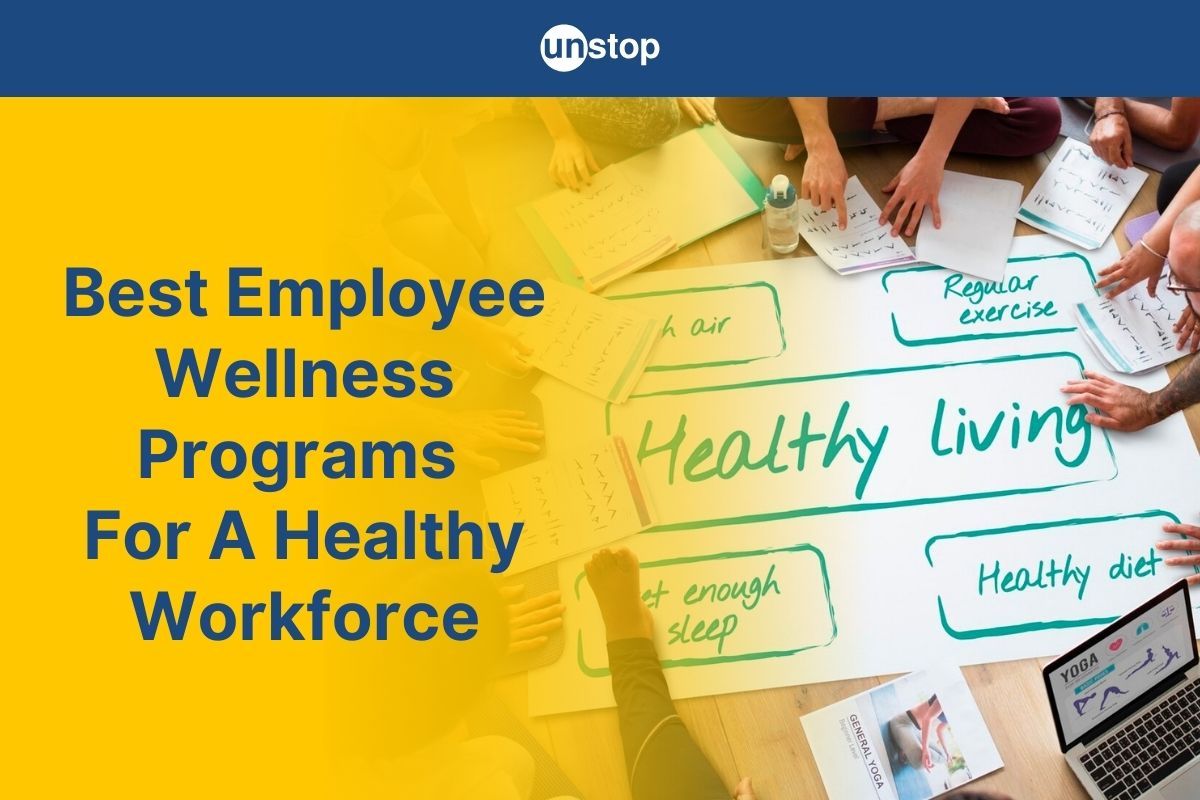
Are you ready to transform your workplace into a hub of productivity and well-being? Employee wellness programs are the key to unlocking a healthier, happier, and more engaged workforce. By investing in these initiatives, not only do you show your employees that their well-being matters, but you also reap the benefits of increased retention rates, improved morale, and enhanced overall performance.
Let’s explore the impact of employee wellness programs on organizational success and learn how simple steps can make a significant difference to the company culture and bottom line.
What are Employee Wellness Programs?

Definition
Employee wellness programs are initiatives implemented by companies to promote the well-being of their employees. These programs typically include activities, resources, and policies aimed at improving employees' physical, mental, and emotional health.
Implementing employee wellness programs offers long-term benefits and creates a positive work environment that fosters productivity and job satisfaction.
Key Components of Effective Programs
Essential Elements: A successful wellness program comprises essential components such as health screenings, fitness challenges, and nutritional counseling. These elements aim to promote physical well-being among employees.
Leadership Support: Leadership support plays a pivotal role in the success of employee wellness programs. When executives actively endorse and participate in these initiatives, it sends a powerful message about the organization's commitment to employee well-being.
Personalization: Offering personalized wellness initiatives ensures that employees receive tailored support based on their unique needs and preferences. This approach acknowledges that individuals have different health goals and challenges.
Importance of Employee Wellness Programs
Improved Employee Health
Employee wellness programs play a crucial role in enhancing both the physical and mental health of employees. These initiatives often include flexible schedules, mental health resources, workplace ergonomics, etc. By encouraging healthier lifestyle choices, employees can experience reduced stress levels and improved overall well-being.
Reduced Absenteeism
Implementing employee wellness programs can lead to a significant decrease in absenteeism rates among staff members. When employees are healthier and less stressed, they are more likely to show up for work consistently. This results in increased productivity levels within the organization.
Lower Healthcare Costs
Employee wellness programs can lead to a reduction in healthcare costs for employers. By promoting preventive care measures and healthy living habits, these programs help lower the incidence of chronic illnesses among employees. As a result, companies experience decreased medical expenses related to treating preventable conditions.
Enhanced Employee Engagement
Engagement with wellness programs fosters a sense of community among employees, boosting their morale and job satisfaction levels. When individuals feel supported by their employer through initiatives that prioritize their well-being, they are more likely to be engaged at work. This heightened engagement translates into improved performance and collaboration within teams.
Find a variety of different employee engagement initiatives on Unstop and select the one that best suits your needs.
Increased Retention Rates
A direct correlation exists between employee wellness programs and higher retention rates within organizations. When employees feel valued through access to comprehensive well-being resources, they develop stronger loyalty towards their company. Consequently, companies benefit from enhanced employee retention rates as staff members are more inclined to stay long-term.
Examples of Employee Wellness Programs
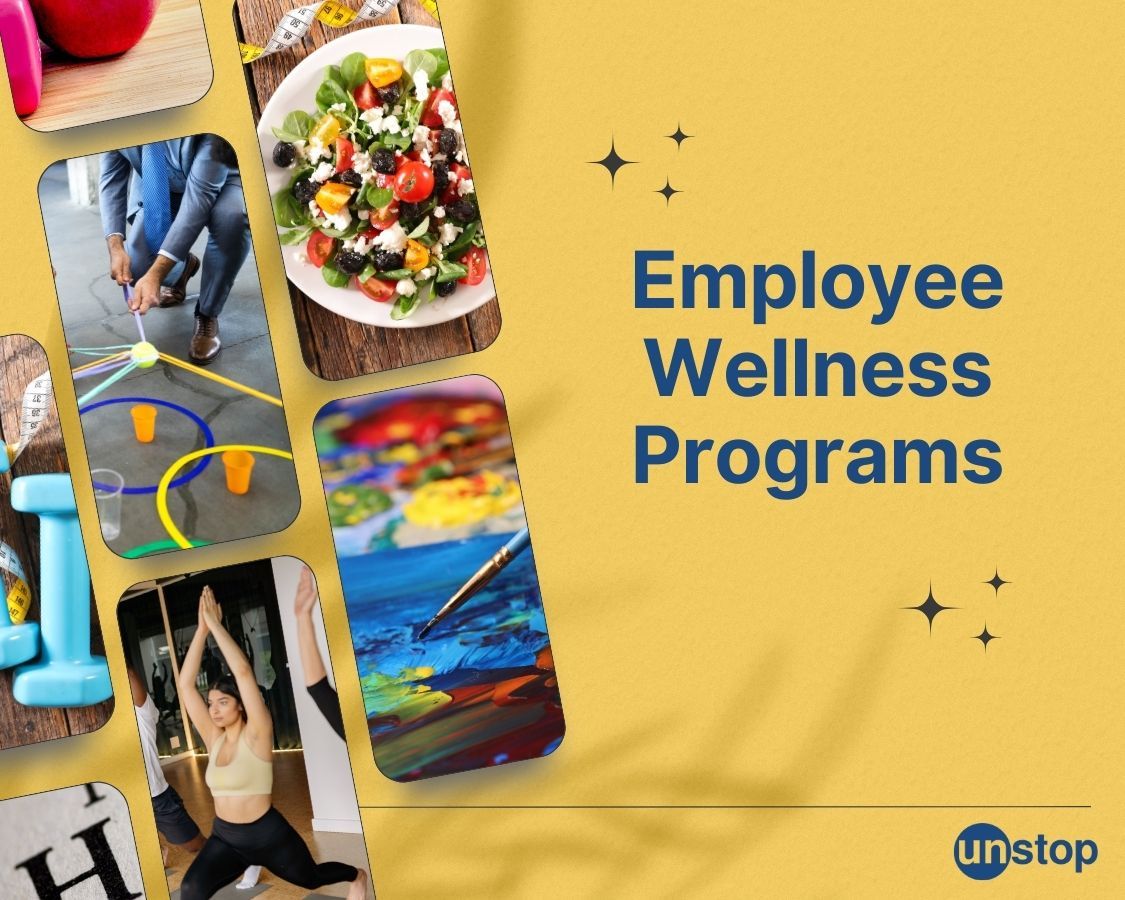
Common Examples of Employee Wellness Programs
- Yoga Sessions: Offering weekly yoga sessions to employees can help reduce stress, improve flexibility, and promote overall well-being.
- Mindfulness Workshops: Providing workshops on mindfulness techniques can help employees manage stress, increase focus, and enhance mental health.
- Team Fitness Competitions: Organizing team fitness competitions can encourage camaraderie among employees, promote physical activity, and boost morale.
- Healthy Eating Challenges: Implementing healthy eating challenges can educate employees on nutrition, encourage healthier food choices, and support overall wellness. These can be centered around drinking more water, going ‘vegan for a meal’, etc.
- Mental Health Support Groups: Establishing mental health support groups can create a safe space for employees to share experiences, seek guidance, and receive emotional support.
- On-Site Health Screenings: Offering on-site health screenings for employees can help identify potential health issues early, promote preventive care, and encourage healthy lifestyle choices.
- Financial Wellness Seminars: Providing seminars on financial wellness can educate employees on budgeting, saving, and investing, leading to reduced financial stress and increased financial security.
- Work-Life Balance Workshops: Hosting workshops on work-life balance can help employees manage their time effectively, reduce burnout, and improve overall quality of life.
- Fitness Classes: Offering a variety of fitness classes such as Zumba, Pilates, or spinning can cater to different preferences, promote physical activity, and enhance employee well-being.
- Employee Field Days: Employee field days are organized events that involve various team-building activities, sports competitions, and outdoor games that promote camaraderie and physical exercise. They provide a break from the usual work routine and offer a chance for employees to bond outside of the office environment.
- Smoking Cessation Programs: As the name suggestions, these programs help individuals quit smoking. These programs often include counseling, support groups, and resources to assist employees in their journey to becoming smoke-free.
- Childcare facilities: Having childcare facilities on-site can help employees balance their work and family responsibilities more effectively, reducing stress and increasing productivity.
- Workplace Library: Offer a quiet space for individual reading and reflection with easy access to a variety of books for personal and professional development. This supports continuous learning and intellectual stimulation.
- Games Room: A games room provides a space within the workplace where employees can relax, unwind, and take a break from their daily tasks. It can include board games, video games, and puzzles that can help employees de-stress, boost creativity, and foster camaraderie among coworkers.
- Volunteer Programs: Volunteer programs offer opportunities for employees to engage in community service or charitable activities. This allows employees to give back to their community, fostering a sense of social responsibility and empathy.
- Healthy Snack Bar: Provide a complimentary healthy snack bar stocked with fresh fruits, nuts, yogurt, and other healthy options. This encourages employees to make healthy choices throughout the day.
- Wellness & Employee Newsletter: A wellness and employee newsletter can provide valuable information, tips, resources, and updates on various wellness initiatives within the organization. This newsletter can also cover topics such as mental health awareness, stress management techniques, physical fitness tips, healthy eating habits, mindfulness practices, and upcoming wellness events or programs. This can help increase awareness about the importance of well-being, promote healthy habits, and encourage employees to prioritize their health.
Offbeat Examples of Employee Wellness Programs
- Laugh Therapy Sessions: Laughter yoga or comedy therapy sessions can be hosted to infuse humor into the workplace. Laughter has proven health benefits, reducing stress and enhancing mood.
- DIY Wellness Challenges: Employees can be encouraged to create their own wellness challenges. This could include personal goals, hobbies, or activities that contribute to their well-being, promoting individualized and holistic wellness.
- Digital Detox Days: Designate specific days where employees are encouraged to disconnect from digital devices. This promotes mindfulness, reduces screen time, and helps combat digital fatigue.
- Nap Pods or Relaxation Rooms: Create dedicated spaces with nap pods or relaxation rooms where employees can take short breaks for power naps or meditation, promoting stress reduction and increased focus.
- Mental Health Days with Therapy Animals: Introduce mental health days where employees can spend time with therapy animals. Interacting with animals has proven therapeutic benefits, reducing stress and promoting emotional well-being.
- Random Acts of Kindness Initiatives: Implement a program where employees engage in random acts of kindness, both within the workplace and in the community. This fosters a positive work environment and a sense of purpose.
- Art Workshops: In artistic expression workshops employees can engage in various forms of creative expression, such as painting, drawing, or sculpting. This not only serves as a therapeutic outlet for stress but also promotes creativity and mindfulness.
- Book Club: Book clubs encourage social interaction and teamwork, while fostering a sense of community and shared interests.
- Music Therapy Sessions: Music therapy has proven benefits for reducing stress, improving mood, and fostering a sense of community. Consider bringing in professional music therapists to lead sessions or encourage employees with musical talents to contribute.
- VR Relaxation Destinations: Offer employees virtual reality (VR) experiences of calming environments like beaches, forests, or mountain retreats to promote relaxation and stress relief during breaks.
- Bring Your Pet to Work (Once a Month): Allow employees to bring their pets to work on a designated day (with proper pet policies in place). Studies show interacting with pets can reduce stress and improve mood.
- "Mindful Minute" Breaks: Dedicate designated "Mindful Minute" breaks throughout the workday where calming music plays in common areas, encouraging employees to take a short break for deep breathing exercises or meditation, promoting relaxation and focus.
- Improvisation Games: Host workshops led by improv comedy instructors who teach employees basic improvisation techniques. These can improve communication skills, creativity, and foster a sense of fun and connection
- Movie Evenings: End a workday with a short movie session. This could include documentaries or workplace-appropriate comedies.
- Quiz/Trivia nights: Quiz or trivia nights can be a fun and engaging employee wellness program that promotes teamwork, social interaction, and mental stimulation. These events can also help improve cognitive function, as participants are challenged to recall information, think critically, and problem-solve in a fun and lighthearted way.
Real-Life Examples of Corporate Wellness Programs
Many renowned companies prioritize employee well-being through innovative corporate wellness programs. Here are examples from well-known organizations:
- Google - gFit: Google's gFit program offers a comprehensive approach to employee wellness, including fitness classes, mindfulness training, nutritional counseling, and access to on-site gyms. The company also provides on-site healthcare services and mental health support.
- Microsoft - Microsoft Cares: Microsoft Cares focuses on holistic well-being, offering fitness centers, mental health resources, nutrition guidance, and wellness challenges. The company encourages a healthy work-life balance and provides ergonomic workspaces for employee comfort.
- Facebook - Wellness@Facebook: Facebook's wellness program encompasses fitness classes, mental health support, nutrition workshops, and ergonomic workspaces. The company also promotes a culture of taking breaks and disconnecting from work to reduce stress.
- Johnson & Johnson - Live for Life: This program is a longstanding example of corporate wellness. It offers on-site fitness centers, health screenings, stress management programs, and incentives for healthy behaviors. The company has a strong commitment to employee health and well-being.
- IBM - Healthy Living Program: IBM's Healthy Living Program provides employees with access to fitness centers, wellness coaching, smoking cessation programs, and preventive healthcare services. The company encourages a proactive approach to health and well-being.
- Amazon - WorkingWell: Amazon's WorkingWell program focuses on workplace ergonomics, injury prevention, and mental health resources. The company provides on-site wellness centers, fitness classes, and initiatives to enhance overall employee well-being.
- Accenture - Wellbeing at Accenture: Accenture's Wellbeing program offers a range of resources, including mental health support, fitness challenges, nutritional guidance, and flexible work options. The company values a culture of inclusivity and holistic well-being.
These examples illustrate the diversity of corporate wellness programs, emphasizing physical fitness, mental health, work-life balance, and overall employee well-being. Companies often tailor their programs to align with their organizational culture and the unique needs of their workforce.
Strategies for Encouraging Participation
Incentives
Offer varied incentives to boost engagement, such as gift cards, extra time off, or wellness-related prizes. These rewards can motivate employees to actively participate in wellness programs.
Communication
Implement clear and consistent communication strategies to inform staff about program details and benefits. Utilize multiple channels like emails, posters, and team meetings to ensure that information reaches all employees effectively.
Community Involvement
Encourage community involvement by organizing group activities like charity runs or volunteering events. This fosters a sense of belonging and camaraderie among employees while promoting overall well-being.
Providing Diverse Options
Offer a range of wellness activities such as fitness classes, yoga sessions, and health coaching to cater to various interests. Encourage participation by providing options like healthy eating workshops, health fairs, and personalized wellness plans for employees.
Create a diverse schedule that includes both high-intensity workouts for fitness enthusiasts and relaxing activities like yoga for those seeking stress relief.
Supportive Environment
Designate specific areas within the workplace for physical activities, whether it's a designated gym space or an outdoor area for group exercises. Ensure access to necessary equipment, such as yoga mats or weights, to facilitate different types of workouts during breaks or after work hours.
Promote a culture where taking breaks for short walks or stretching is encouraged to break up long periods of sitting at desks.
Supporting Diverse Employee Needs
Cultural Considerations
Employee wellness programs should embrace cultural diversity to cater to the varying backgrounds and beliefs within a workforce. By incorporating elements that resonate with different cultures, such as mindfulness practices or dietary preferences, companies can ensure inclusivity.
Accessibility for All Abilities
Ensuring employee wellness programs are inclusive of all abilities is crucial in creating an equitable work environment. Offering a range of activities that accommodate different physical capabilities promotes participation and engagement among team members with varying needs.
Providing options like seated exercises or virtual classes for remote workers or partnering with experts to create specialized programs for individuals with disabilities. By prioritizing accessibility, organizations demonstrate their commitment to supporting every employee's holistic well-being.
Creating Comprehensive Wellness Programs
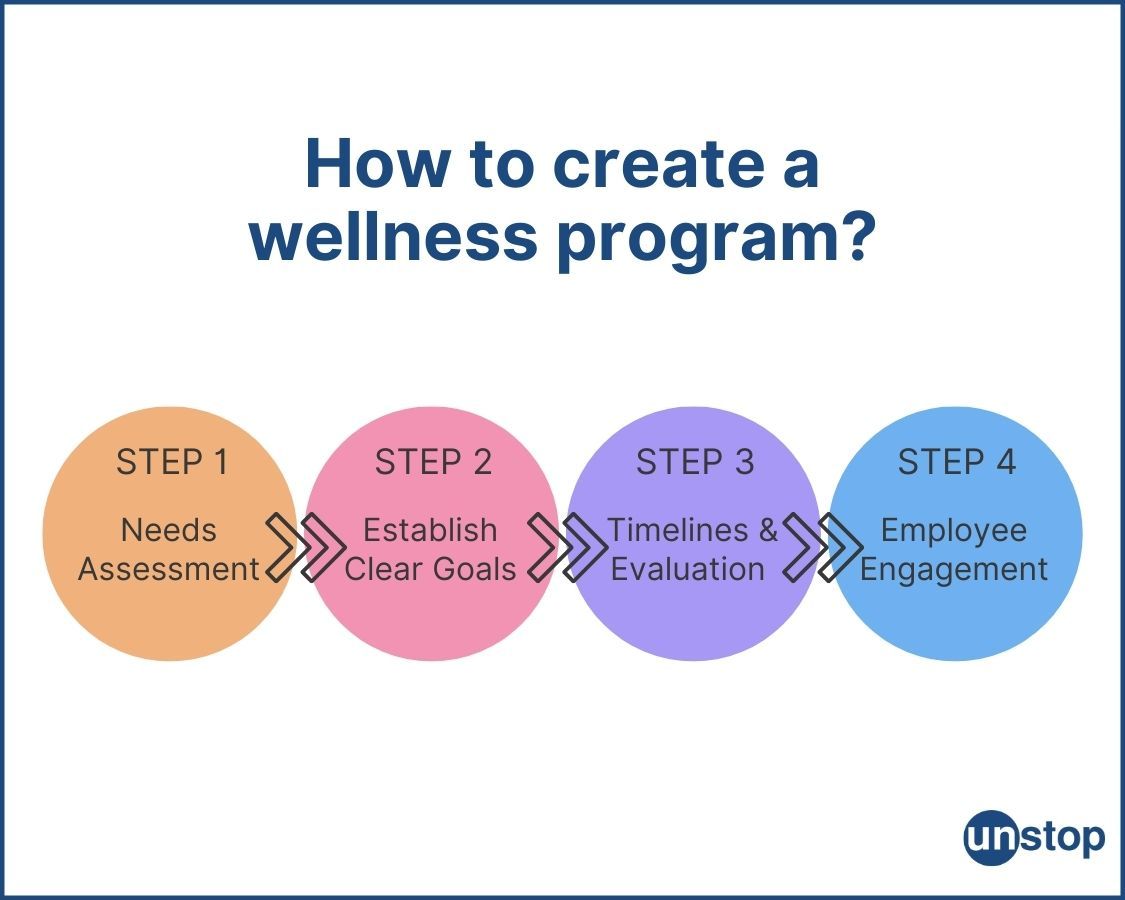
Needs Assessment
Begin by conducting a needs assessment to understand the specific challenges and requirements of your workforce. This step involves gathering feedback through surveys, focus groups, or interviews.
It's crucial to involve employees in this process to ensure that the comprehensive wellness program addresses their unique needs. By understanding what areas require improvement, you can tailor the program effectively.
Establish Clear Goals
Set clear and measurable goals for your wellness initiatives. These goals should align with the overall objectives of the organization while being realistic and achievable within a set timeframe.
By defining these goals, you provide a roadmap for success and enable employees to track their progress. Whether it's reducing stress levels or promoting healthy lifestyle choices, clarity is key.
Timelines and Evaluation Processes
Develop a detailed plan outlining timelines for implementation and evaluation processes. This ensures that the program stays on track and allows for adjustments based on feedback and outcomes.
Regularly evaluating the effectiveness of the program is essential for continuous improvement. Implementing feedback loops enables you to make informed decisions on enhancing employee engagement and well-being.
Employee Engagement
Foster employee engagement throughout all stages of program development. Encourage participation through incentives, communication strategies, and creating a supportive culture around well-being initiatives.
Engaged employees are more likely to benefit from wellness programs, leading to improved morale, productivity, and overall satisfaction within the organization.
Measuring the Impact on Business and Employees
Key Metrics
Employee wellness programs' success is measured through various key metrics such as absenteeism rates, healthcare costs, and employee engagement levels. These metrics provide a tangible way to evaluate the impact of these programs on both business performance and employee well-being.
Feedback Collection
Organizations often collect feedback from employees through methods like surveys, focus groups, and one-on-one meetings. This direct feedback allows companies to understand what aspects of the program are working well and which improvements can enhance overall job satisfaction.
Closing Thoughts
Incorporating employee wellness programs is crucial for fostering a healthy and productive work environment. By implementing comprehensive initiatives that cater to diverse needs, companies can boost employee morale, enhance job satisfaction, and improve overall well-being. Encouraging participation through engaging activities and measuring the impact on both, the business and employees can further drive organizational success.
Frequently Asked Questions (FAQs)
1. What are the key components of effective employee wellness programs?
Employee wellness programs should include health assessments, educational resources, fitness activities, mental health support, and incentives for participation. These components help in promoting a holistic approach to well-being among employees.
2. How can employers encourage participation in wellness initiatives?
Employers can boost participation by offering rewards such as gift cards or extra time off, organizing team challenges, providing flexible scheduling for wellness activities, and creating a supportive company culture that values employees’ well-being.
3. Why is it important to measure the impact of wellness programs on both business and employees?
Measuring the impact helps in assessing the effectiveness of the program, identifying areas for improvement, demonstrating ROI to stakeholders, enhancing employee engagement and satisfaction levels, reducing healthcare costs for the organization, and fostering a healthier work environment overall.
4. What strategies can companies use to support diverse employee needs within their wellness programs?
Companies can provide customizable options such as virtual resources for remote workers, culturally sensitive materials and activities that cater to different backgrounds, language options for communication materials, and inclusive policies that accommodate various abilities and preferences.
5. What steps are involved in creating comprehensive employee wellness programs?
Creating comprehensive programs involves conducting needs assessments among employees, setting clear goals based on findings, designing tailored initiatives addressing physical & mental health aspects, implementing communication plans, monitoring progress through feedback mechanisms, and regularly evaluating outcomes to ensure long-term success.
You may also be interested in the following:
- Employee Empowerment: Understanding Meaning, Benefits & Strategies
- Employee Grievance: Understanding Types, Causes & Solutions
- Employer Branding Strategy: A Step-by-Step Guide (With 15+ Strategies)
- Employee Appraisal Comments: 115+ Phrases Divided By Skills & Roles
- Employee Satisfaction: Uncovering Its Importance & Strategies
I’m a reader first and a writer second, constantly diving into the world of content. If I’m not writing or reading, I like watching movies and dreaming of a life by the beach.
Login to continue reading
And access exclusive content, personalized recommendations, and career-boosting opportunities.
Subscribe
to our newsletter
Blogs you need to hog!
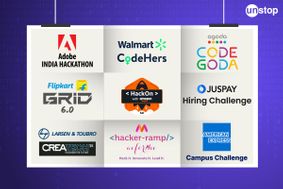
Organize Hackathons: The Ultimate Playbook With Past Case Studies

What is Campus Recruitment? How To Tap The Untapped Talent?
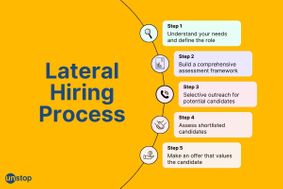
Lateral Hiring: A Complete Guide To The Process, Its Benefits, Challenges & Best Practices
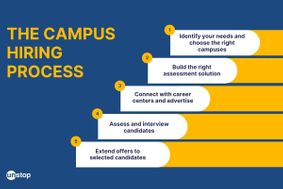












Comments
Add comment